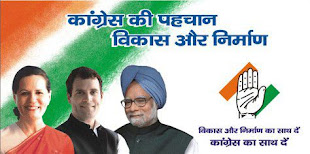M.L.Dhar
About two lakh nomadic Gujjar and Bakarwal families in Jammu and Kashmir are being brought under the Public Distribution System (PDS). “They will be issued temporary ration cards so that they get rations while migrating from one place to another without any difficulty,” said the state’s Minister for Consumer Affairs and Public distribution, Qamar Ali Akhoon. This meets their long-standing demand as due to their migratory nature “they had not been receiving benefits of different government schemes launched for the BPL families,” said the Minister.
Scarcity of food articles during migration and at high altitudes has been the bane of these nomadic people. The problem is expected to get more or less mitigated by extending PDS cover to them.
Currently a sizeable population of Gujjars and Bakerwals of Jammu and Kashmir are engaged in seasonal migration from the upper reaches of the Northwestern Himalayas to the foothills and plains of Jammu division. They are a common sight on various highways and roads moving along with their herds of livestock during these days History.
It is believed that Gujjars and Bakerwals were basically Rajputs who are said to have migrated for various reasons from Kathiawad region of Gujarat to Kashmir. Kalhana in his history of ancient Kashmir, Raj Tarangni, mentions about these people living on the borders of Kashmir in 9th and 10th centuries. It is said that some centuries ago they adopted the Muslim faith. They divided into two professionally different sects of Gujjars and Bakerwals. They remained in oblivion till 17th century when Gujjars became high officials in Poonch. One of these officials Rah-Ullah Khan even established Sango dynasty of Gujjars in 18th century in the area but it remained short-lived.
Population
The Gujjars and Bakerwals, the third largest ethnic group in Jammu and Kashmir, constitute more than 20 per cent population of the State. They are the state’s most populous Scheduled Tribe having a population of 7,63,806 as per the 2001 census. They are mostly concentrated in border districts of Rajouri and Poonch followed by Anantnag, Udhampur and Doda districts. Inter-marriages are common between Bakerwals and Gujjars.
Gujjars together with Bakerwals continue to be a unique community with their own social, cultural and linguistic identities. They spend most of the summer season in the picturesque upper reaches of Pir Panchal ranges relishing natural life in lush green meadows and pastures. However, living in far-flung and difficult areas has affected their cultural, economic and political empowerment and had led to their backwardness.
Lifestyle
Gujjars are mostly herdsmen of buffaloes, many of them possessing minor pieces of land on the mountain foothills. Many of them own barrack-type shelters made of wooden logs called ‘Dhokes’ on the upper reaches. Bakerwals, who belong to the same ethnic stock, largely depend on sheep and goats for their livelihood.
Being landless and houseless, they live nomadic lives moving with their baggage on horses and flock of goats and sheep guarded by ferocious dogs in search of green pastures. Pt. Jawahar Lal Nehru on seeing a group of Bakerwals at Pahalgam in south Kashmir instantly described them as the ‘king of jungles’.
The Central Government notified the Gujjars and Bakerwals in Jammu and Kashmir as Scheduled Tribes in 1991. This has greatly helped them in their educational and economic empowerment by providing equal opportunities and avenues with special privileges of reservation, so that they could fight their economic, social and political backwardness. The Government has been prioritising the education of these nomadic communities at the grass-roots level to arm their children with education and knowledge to enable them to avail the benefit of reservation. Gujjar and Bakerwal hostels at the District level with free boarding and lodging facilities up to 12th class have been provided. Many more are in the pipeline. The Gujjar and Bakerwal students are also benefiting from the Girls hostels and model schools set up in educationally backward areas. Each of the 4,206 SC and ST girl students were given 3,000 rupees scholarship sanctioned by the Centre during the last financial year. It is possible to avail the reservation provided for them in employment and vocational institutions only with their educational empowerment.
Moreover, this has also helped in preserving the Gujjar identity. Decades of efforts to promote Gojri language both at official and non-official levels have made remarkable contribution. Gojri has been introduced in school curriculum upto 12th standard. Besides the Jammu and Kashmir Cultural Academy and Gojri programmes of Radio Kashmir, the sustained contribution of non-governmental organisations like the Gurjar Desh Charitable Turst, Tribal Foundation, Gujjar Centre for Cultural Heritage and other Gojri organisations have made significant contribution in preserving and promoting the ethnic and linguistic identity of Gujjars in Jammu and Kashmir.
But that is not the case with their counterparts in Pak Occupied Kashmir (PoK). With the opening of LoC in Poonch and Uri sectors for people to people contact since November 2005, the visit of the members of Gujjar community living in PoK to meet their relatives on the Indian side of the LoC has been a revelation. One of the visitors Abdul Ghani from Trar Khal in PoK has said, “I am immensely pleased to see my relatives working on significant positions in the government and holding important positions in the political parties in Jammu and Kashmir”. Another visitor Choudhary Mohammad Sharief, a Gujjar also from Trar Khal, has said “The symbols of our culture like folk songs, folk music, traditions and age old rituals are missing on our side which are well visible in Jammu and Kashmir.”
The Gujjars and Bakerwals are brave and courageous people and always helped the Indian Army. In 1965, a Gujjar Mohd. Din of Tosemaidan area near Tangmarg in Kashmir valley was the first to inform the authorities of Pakistani infiltrators’ presence. Lauding their role UPA Chairperson Sonia Gandhi has said “The Gujjars have already fought during 1965 and 1971 wars and today they are fighting militancy and subversion in Jammu & Kashmir.”


























0 Comments